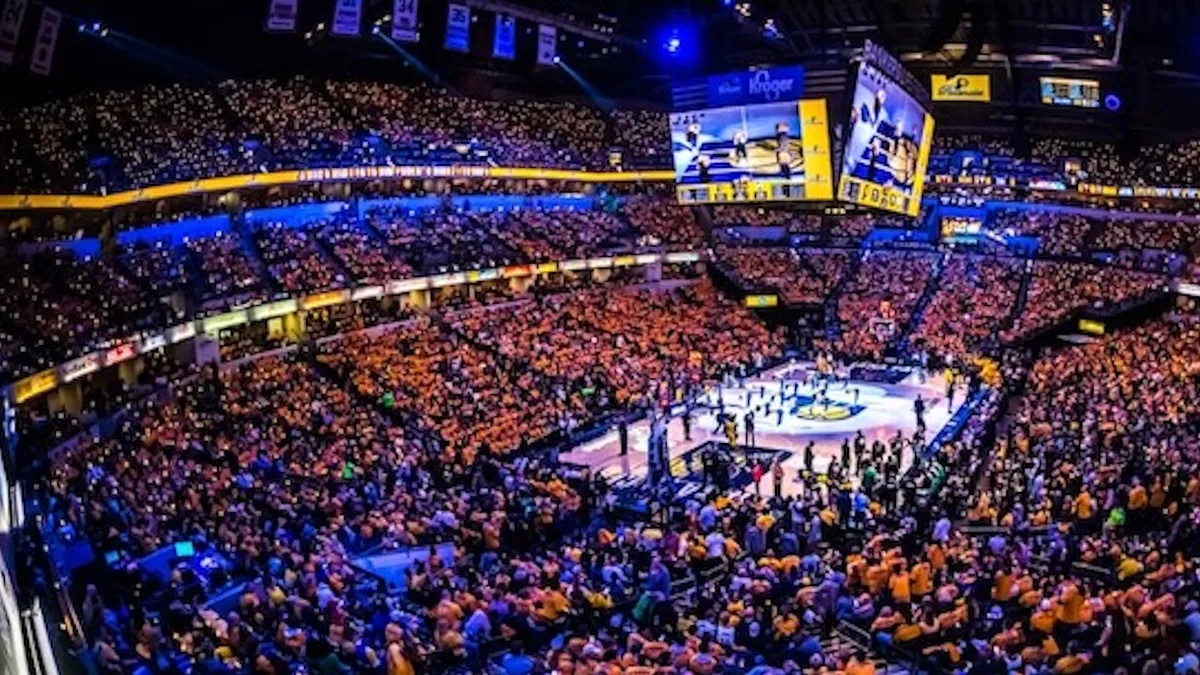As the Indiana Fever marched toward a WNBA playoff berth and the Indiana Pacers geared up for the NBA’s 79th season this summer, the technology team behind both franchises celebrated some wins of its own.
Two years into a modernization journey aimed at boosting business analytics, parent company Pacers Sports & Entertainment had the infrastructure in place to improve data operations in the cloud.
“We took a sledgehammer to every wall and silo we had in the business,” Jared Chavez, data engineering and strategy manager at Pacers Sports & Entertainment, told CIO Dive.
The rearchitected solution unlocked more than just data.
“We’re no longer asking if we have the data or if we can find the data; we’re asking what we can make possible with the data,” Chavez said. “And if it's not possible now, how can we work with our vendors to make it possible.”
Data complexity, siloed systems and the cost of warehousing massive stores of data are a perennial pain point for legacy organizations. Unlocking those resources to fuel analytics, machine learning and generative AI capabilities, has become a priority in banking, insurance, retail and most other industries.
The sports entertainment business is no exception. Outside of player analytics, which generates mountains of in-game insights that can make or break a season, teams grapple with piles of financial, marketing and operations data dating back years or decades — just like any other legacy enterprise.
“Our production database for the Pacers has changed 15 times over the last 25 years,” Chavez said. “That data looks different from database to database.”
On the application side, the organization had loads of potentially valuable data sitting in disconnected point-of-sale systems and CRMs.
Decentralized infrastructure led to a lack of coordination between analytics teams, Chavez wrote in a July post on LinkedIn. Different parts of the business developed tooling, skill sets and ways of talking about data that defied alignment.
“The biggest challenge this year has been removing the tribal knowledge and streamlining the processes so that if you're in advertising and you want to look at ticketing data, it's still difficult — you need a Ph.D. to understand that half the time.”
Beyond warehousing
IT leaders are always on the lookout for streamlined solutions that ease processes and add capabilities without ballooning the budget. The quest often leads toward centralized, cloud-based platforms with federated access.
Data management problems are particularly ripe for outsourcing, according to Forrester.
Working with Pacers Basketball Data Architect Michaela Roberts, Chavez turned to Databricks to implement a lakehouse solution and then to Salesforce for its Data Cloud capabilities. Databricks is the organization’s central data repository, which connects to Data Cloud for business functions, Tableau and Microsoft Power BI for business applications, and to Snowflake as a pipeline for NBA and WNBA league data.
“We're not really looking at it as a warehouse anymore — we have an ecosystem,” Chavez said. “We have habitats all over the company, where people like to work. Wherever they want to get their data is fine with me, as long as Databricks is the engine.”
The integrations weren’t easy, but they’ve paid off, according to Chavez. “It took about six months to work through it — we saw the good, bad and ugly — but we got it done,” he said.
As part of the rebuild, the company tore down warehouses built on Azure Synapse, mostly to trim costs. Functionality wasn’t a problem; price point was. The move saved nearly $100,000 in a year, Chavez said on LinkedIn.
The new data architecture is both more sophisticated and easier for the non-technical side of the organization to use.
“A lot of upgrades happened around the business, with old systems ripped out and new systems assimilating into a common data model,” Chavez said. “Marketing doesn’t need to know the names of the systems — they don’t have to.”
With a fresh data ecosystem up and running, the Pacers organization can now look to emerging technologies to enhance the business and the fan experience. Chavez is exploring how VR and augmented reality capabilities could be deployed in Gainbridge Fieldhouse, the home court of the Pacers and the Fever.
Generative AI is also on the agenda, but Chavez is cautious about the technology.
“It’s flashy to talk about and messy to get started with,” he said. “It’s easy to start up and spit things into it, but it's what comes out of it that's always the messy part.”




















